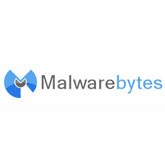Working in the Information Technology industry proves to be an ever changing world for many of us. During the course of a week, a day or even an hour, we can find ourselves fighting multiple fires with little more than a google search and vague forum solution from 2009. I wish I were writing to tell everyone that I had stumbled across the fix to this common problem, but we all know that isn’t going to happen. Many times, even the most practical solutions and best practices end up leaving us stumped and lost in an internet search loop that eats away our day. Such is the journey of the IT Administrators and professionals of the world. So what options do we have? What tools can we use to try and win these daily battles with a little more consistency and a little less ibuprofen? While I do not believe that these tools, nor the hundreds and thousands of others out in the depths of the world wide web, will ever help anyone solve the IT mysteries of the universe, I do believe that there are a few of them that could help make your work day less painful.
IP Address Scanners
Have you ever been asked to create an inventory of addresses for multiple subnets? Or compile a list of static IP addresses for a cluster of servers? Or how about just plain old fashioned inventory management in an environment that was created over and over again long before you were there? A quality IP scanner can help actually prove to be somewhat useful with a task like that. I am sure that most everyone is aware of the near limitless options available to us as an IP scanner: Angry IP Scanner, Who Is on My WiFi, Netgear Genie, Easy Net Monitor, Soft Perfect and about a thousand others. I personally like Advanced IP Scanner. It is a small resource efficient scanner that only comes around when I need it. It isn’t constantly asking me to update or upgrade and of course it has the best quality of all for most of us… it is completely free! I can toss this little program on my work machine and scan for a specific IP address or scan an entire range. And it actually creates a fairly detailed list of network devices found during the scan, giving me manufacture information, logged on users and even a hyperlink to a WEBGUI if available. It will even allow for me to initiate a Remote Desktop Connection directly from the list on a network machine. It allows for me to at least create a starting point for building out my network and IT inventory. As I stated, it won’t save the world by any means, but it’s a valuable tool that I use quite often and I would strongly recommend finding an IP scanner that works best for you and your environment keeping it in the everyday tool box.



Drive Cleaners and Management
You ever tried uninstalling a program from an end users machine only to still see remnants of the pesky little thing still lingering around for days and weeks afterwards? Ever needed to clean up some remaining registry keys after a software scrub? These are fairly common and tedious little jobs that occupy our time at some point or another. Having a good solid drive management tool will go a long way in streamlining these tasks and keeping all the necessary applications in one convenient window you work. Think of it as your “Leatherman” or “All-In-One” tool from your typical toolbox. As with most open source products on the internet, there are many choices available in the drive management realm as well. Auslogics has several capable toolkits that do a variety of tasks from disk defragmentation to registry cleaning. Revo Uninstaller is a very handy utility if you want to completely remove a program and all traces of its poor little existence from memory. Revo is the proverbial “Kill it with Fire” method of uninstalling something. For those of you familiar with Revo, “Hunter Mode FTW!” There are even programs out there like CleanMyMac, Disk Warrior and Techtool Pro for you mac users. System Ninja is another good application for Windows based environments. In this category however, my tried and true “go to application” is CCleaner. Exactly as the name implies, it will give you the freedom to remove programs, clean up temp internet files, registry keys and a whole slew of other handy tasks all from one easy to navigate window. There is a free version available that is actually quite capable for day to day tasks and there is also an enterprise edition that will add some more features like disk defragmentation, file recovery and real time monitoring. For my little slice of the IT industry, CCleaner has definitely proven its worth time and time again. There is even an Android application for you die hard smart phone admins! All in all, the operating system equivalent to these tool kits are included with within the programs of your inventory already. Windows comes stock with a program removal tool, a registry editor and all sorts of maintenance applications meant to make your machines run smoother and faster. There are pros and cons to each side of that entity. I personally find it more efficient to rely on the “all-in-one” tool that allows me to accomplish more tasks in a faster time frame and CCleaner certainly helps out where that is concerned.



Antivirus and System Security
By now I am sure that anyone in the IT world understands the importance of keeping the good stuff in and the bad stuff out. Network Security is so much more than just a “best practice” in today’s world. It is an absolute must have in nearly every aspect of your work day. I am also sure that by now, anyone reading this post could easily name a minimum of two antivirus programs that are advertised to help against this exact sort of thing. The truth is that there are nearly unlimited applications that offer to protect you, your PC and your network from unwanted and malicious files. The reason for that truth is because the threat of unwanted and malicious files is equally as unlimited. As of the last study, Kaspersky Labs was reporting that the global threat detection on the internet of newly created malicious files was upwards of 315000 per day. Roughly translated, that equates to the creation of around 17 new malicious files living out in the internet by the time someone finishes reading this blog. And unfortunately for most of us, we are not in the position of taking the risk that could potentially leave our networks vulnerable to one of those files. So what do we do? Well… we fight it as best we can, plainly stated. Most of you likely have an antivirus in place within your network already. It could literally be anything: Norton, McAfee, Malware Bytes, Super Anti Spyware, Security Essentials, and Windows Defender etc. And they all work for what they are intended. In my experiences, true system security comes as much from end user knowledge and education and a good solid firewall as it does from running an antivirus application. I almost view my antivirus applications as the safety net in case something does get past my first two rows of defense. PCMag.com recently published their scores for the top antivirus programs for 2015. The usual folks made their usual appearance on the list and choosing a right fit for your network can be based on multiple factors including but not limited to: cost, ease of deployment, frequency of updates, rated reviews, administration interface etc. The majority of them will have some form of introductory trial period but at some point they will cost money. The completely free ones typically only give us peace of mind using the cliché, something is better than nothing. I personally like Avast Pro or Kaspersky. They are both comparable in deployment options, administration console and cost. They both update their virus definitions on a regular basis and overall they seem to interfere less with day to day applications and workflow to the degree that some of the others I’ve seen can. Just remember that no antivirus software can protect you completely and remove 100% of the risk. Teaching your users things like “No Mary…I don’t believe the email from the Somalian exchange student with a 4.0 GPA and the ‘can do’ attitude who is asking for permission to sleep in your attic and have access to your checking account so he can send you money to keep safe is a legitimate email. So please do not click the attachment.” Or things like “Yes Brinson…I understand that the pop-up windows says you guys are the same age and that she is only 21 miles away and that she really wants to talk. But she doesn’t! So please do not touch that link…” The bottom line here is that with a few simple tips and a little education for your end users and a solid firewall configuration, you will give yourself the freedom and security you need to select the antivirus platform that works best for you and your network. Happy Hunting!



Network Monitoring Platforms
While certainly not applicable in all networks, there are many of us who can and do benefit from monitoring our networks in real time. The constant up time of a company’s network can be equated to many measurable results including customer satisfaction, revenue stream, productivity etc. Any or all of these factors can be affected by a network outage. Monitoring your network can provide you with real time notification if and when a router, a switch, a server or even a circuit loses connection or experiences traffic congestion and bottlenecking. And while the application itself may not help to correct the problem, it will certainly go a long way in helping you get a head start on whatever needs to be done to keep that downtime at a minimum. There are some pretty stable platforms out there for this sort of toolset. Names like PRTG, LabTech, SysAid and Spiceworks come to mind. Like most everything on the internet, there are both paid and free versions of pretty much everything and the main factors in deciding on a solution directly relate to your specific network environment and what you would like to use the product for. For my money, I feel I get the most value out of PRTG. It allows for me to be highly flexible in both the devices I want to monitor and the statistics that I want to monitor across my network. For example, I can simply set it up across my company and network traffic devices and have it alert me if a device becomes unresponsive for a period of time. I can set it up across a server cluster and have it alert me if a drive becomes slow or breaches a remaining size threshold. I can set it up to tell me if a particular port on a switch designed for dedicated traffic flow becomes bottlenecked and my bandwidth utilization becomes compromised. It allows me to be as flexible and detailed as I want to be pretty much across the network. The auto discovery wizard that is included is a solid deployment option for most environments I have seen thus far. The administration console is primarily accessed through a Web interface. There is a mobile application for my phone or tablet. And I could go on and on about the folks over at PRTG. They have a solid platform that delivers consistent results again and again. They are by no means the only ones to choose from though. I assure you that with a little effort and about a half a day of trial and error, you can find an affordable network monitoring tool for your world that will have you already correcting a problem before your phone rings to tell you about it.



Afterthoughts
The good news is that by the time you finished reading this blog, there is another fantastic utility that has been made available somewhere on the internet aimed at making your life easier. That will continue to be the case for the foreseeable future. The reality is that none of these tools will do all of the work for you all of the time. Cars do not make better drivers. They simply make the efficiency in which we arrive, the security in where we travel and the maintenance we must perform easier along the journey.
Download Links and Web Page
PRTG
Advanced IP Scanner
CCleaner
Avast
Kaspersky
Additional Resources
The Best Antivirus for 2015
Top Network Monitoring Software Products
29 Best Free Network IP Scanner Software For Windows










